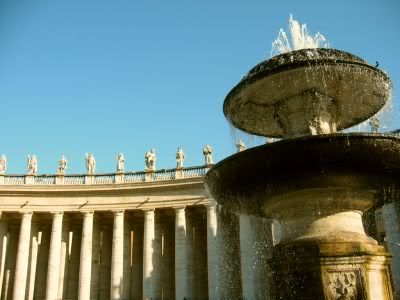
St. Peter's Basilica is a Catholic major basilica in the Vatican City. This building is often described as the largest church ever built and one of the holiest sites in Christendom.

Tradition says it was built at the place where St. Peter, one of the apostles of Jesus and considered the first pope, was crucified and buried. The church hosts the tomb of St. Peter under the main altar.
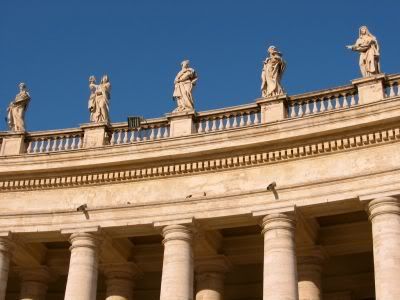
St. Peter's Square is located directly in front of the basilica. The open space was re-designed by Gian Lorenzo Bernini, from 1656 to 1667, under the direction of Pope Alexander VII, as an appropriate forecourt, designed 'so that the greatest number of people could see the Pope give his blessing , either from the middle of the facade of the church or from a window in the Vatican Palace.'
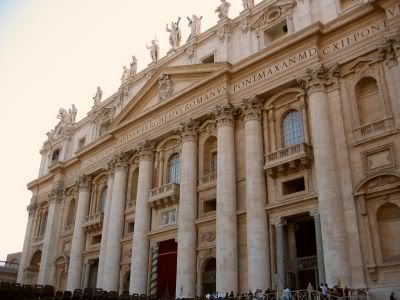
The facade is 114.69 metres wide and 45.55 m high. The five artistic bronze doors leading from the entrance to the basilica, each have their own history. On top are statues of Christ, John the Baptist and eleven of the apostles; St. Peter's statue is inside.
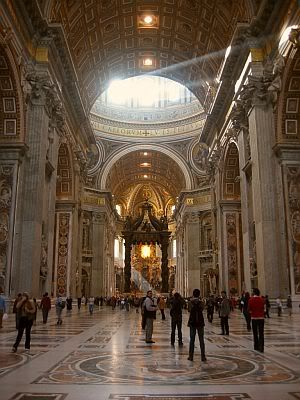
Once inside the church, the first breathtaking impressions are of its staggering size. Moving down the church, the Bernini's bronze altar canopy at the heart of basilica stands above the supposed tomb of St Peter the Apostle.
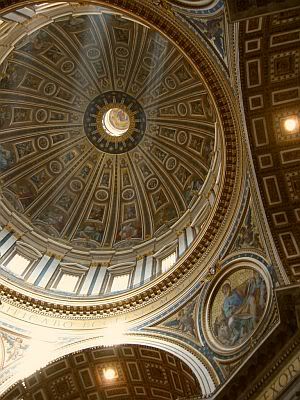
In the dome, the mosaics represent the inhabitants of Heaven: Christ, Mary, St. John the Baptist, the Apostles, the angles carrying the instruments of Christ's Passion and Death toward the center. Finally the mosaic in the ceiling, represents God the Father, presiding over Heaven. Heaven (the dome) and earth (the floor level) are brought together by the circular mosaics at the base of the dome, representing the four Evangelists (Matthew, Mark, Luke and John).
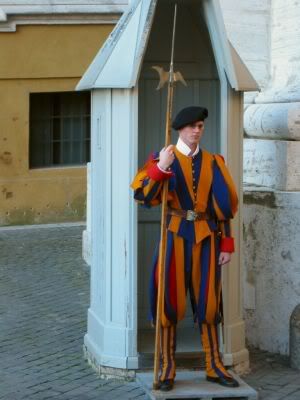
The Swiss Guards give a touch of color to St. Peter's Square: in their Renaissance costumes, with puffed sleeves and knicker-bockers striped red, blue and orange, they stand on either side of the basilica, guarding the gates into Vatican City.
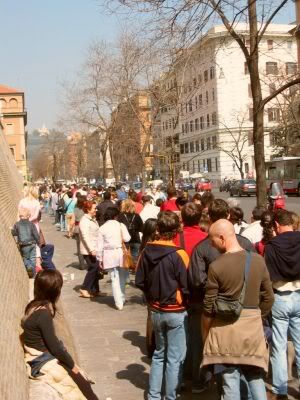
The Vatican Museum originated as a group of sculptures collected by Pope Julius II (1503-1513). As seen today, the museum is a complex of different pontifical museums and galleries. It also includes the Gallery of Tapestries, a collection of various 15th and 17th century tapestries. Even out of peak tourist season the queue to the Vatican Museum was an hour long.
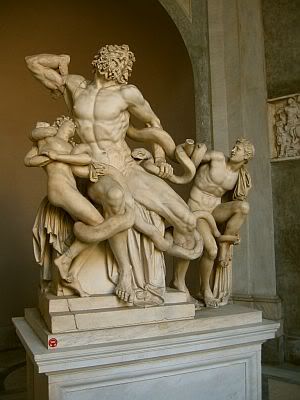
One of the Vatican's most celebrated works, the Laocoon sculpture shows a Trojan priest and his sons grappling with sea serpents. Many classical sculptures are laid out in the Museo Pio-Clementino.

Particularly impressed by the large murals and incredible frescoes that line the walls and ceilings.

Gallery of the Candelabra was built in 1761 as an open loggia, Pius IV had it closed and sectioned off by a series of arches, columns and pilasters. Its name is derived from the candelabra in front of the pilasters. The ceiling was painted by Domenico Torti and Ludwig Seitz during the years of 1883 - 1887 under Leo XIII.
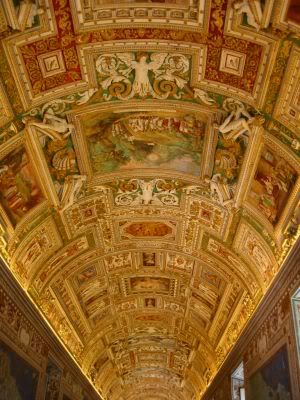
In the Gallery of Maps (Galleria delle Carte Geografiche), topographical maps of the whole of Italy were painted on the walls by friar Ignazio Danti of Perugia. It is 120 metres long. It took Danti 3 years (1580-1583) to complete the 40 panels. The decorations on the vaulted ceiling is the work of a group of Mannerist artists.
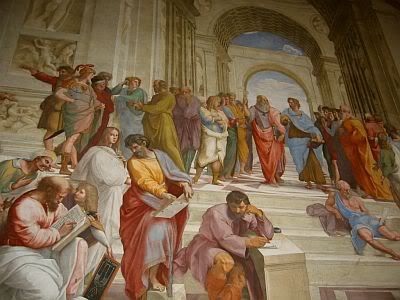
In 1503, Pope Julius II commissioned the young Raphael to decorate four modestly sized rooms in the Vatican. The Stanze della Segnatura contains Raphael's most famous frescoes, which were painted between 1508 and 1511. It was established by a theologian and meant to represent the three greatest categories of the human spirit: Truth, Good and Beauty. Above, rational Truth is illustrated in the School of Athens.
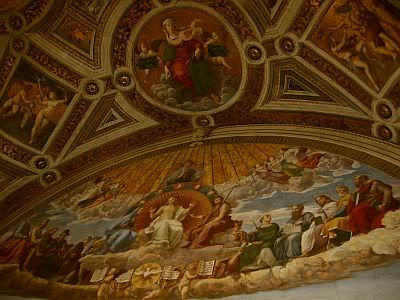
The Stanza d'Eliodoro was decorated by Raphael immediately after the Segnatura. The paintings explore the theme of Divine Providence intervening to defend Faith.
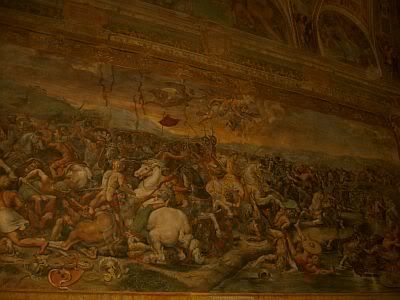
On the walls of the final room, Sala di Constantino (1517 - 1524) are painted four episodes of Constantine's (the first Christian emperor to officially recognize the Christian faith, granting freedom of worship) life which testify to the defeat of paganism and the triumph of the Christian religion. Due to Raphael's premature death, only one painting in this room is based on his drawings. The third room is Stanza dell' Incendio del Borgo.

More murals on the ceiling of a dome.
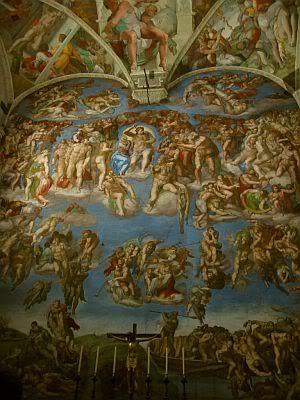
Inside the Sistine Chapel, this mighty composition, painted by Michelangelo (1536 - 1541), is centred around the dominant figure of Christ, captured in the moment preceding that when the verdict of the Last Judgement is uttered.
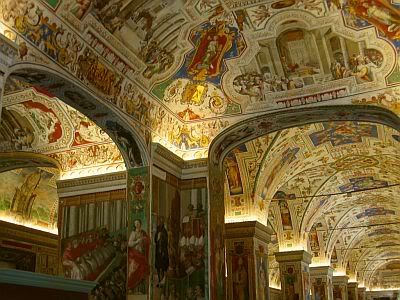
Not many religions actually own a country, but Catholicism isn't just any religion. Holy See (Vatican City) is probably per square foot the richest independent state in the world, making up for its total lack of natural resources with an astonishing collection of priceless art treasures.
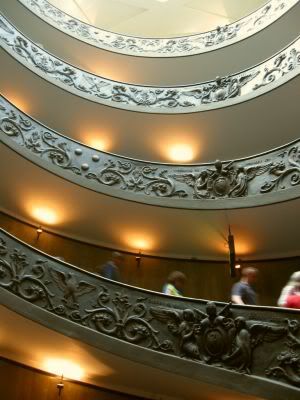
A double helix staircase, designed in 1932 by Giuseppe Momo, the staircase is composed of two different spirals - one to walk up to the exhibits, and one to leave the museum
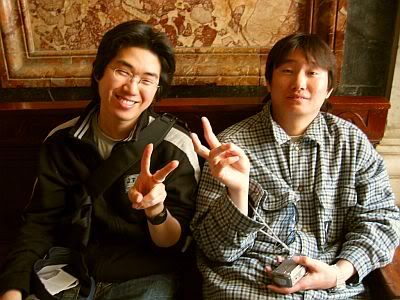
The young Koreans that I met in Florence and we visited the Vatican City together.

The brother and sister, Hyo Sang and Hyo Jin. We first met in Pisa and to find out later that we were actually living in the same B&B in Florence.
Breakfast and Bed Euro 15 per night
Roma Amore MinBak
Contact : Lee (+39-06-4454830 or +39-333-2950587)
E-mail : madoros0717@hanmail.com
Homepage : www.romaamore.com
Review : Average for low price. Korean-style breakfast and dinner provided. Price for non-peak season.
Tired after two weeks of long vacation in France and Italy. Planning for this trip was quite stressful as well. However, looking forward to my next Europe trip : Germany, Austria and Czech, probably next April.

6 comments:
Wow, the photographs are magnificent!! It's photo-travel indeed! More please??
G'day Patrick.
I came across your Blog randomly.
The photographs you have taken are magnificent, and I wanted to congratulate you.
Good luck on your travels, and keep posting these wonderful photos.
Regards, Pete.
Vatican City. If you went there early April you would have witnessed one of the biggest funerals in history. It is my dream to go to VC to see the Pope. But hey, you do take good pics!
Ai Ling
thank you for comments. will post when i have new pictures.
ai ling : i like rome more than any other cities that i visited during this trip.
hi.Pat, u had a nice trip. Read Dan Brown`s Angel & Demon which talk alot abt the secret underground tunnels of the vatican. It makes your pictures & explaination very interesting. I hope someday to travel to these places. thanks for sharing.
ceelia-tokyo : oppss, have we met before ? thanks for recommendation. now reading da vinci code. will check angel & demon later. have a good day.
Post a Comment